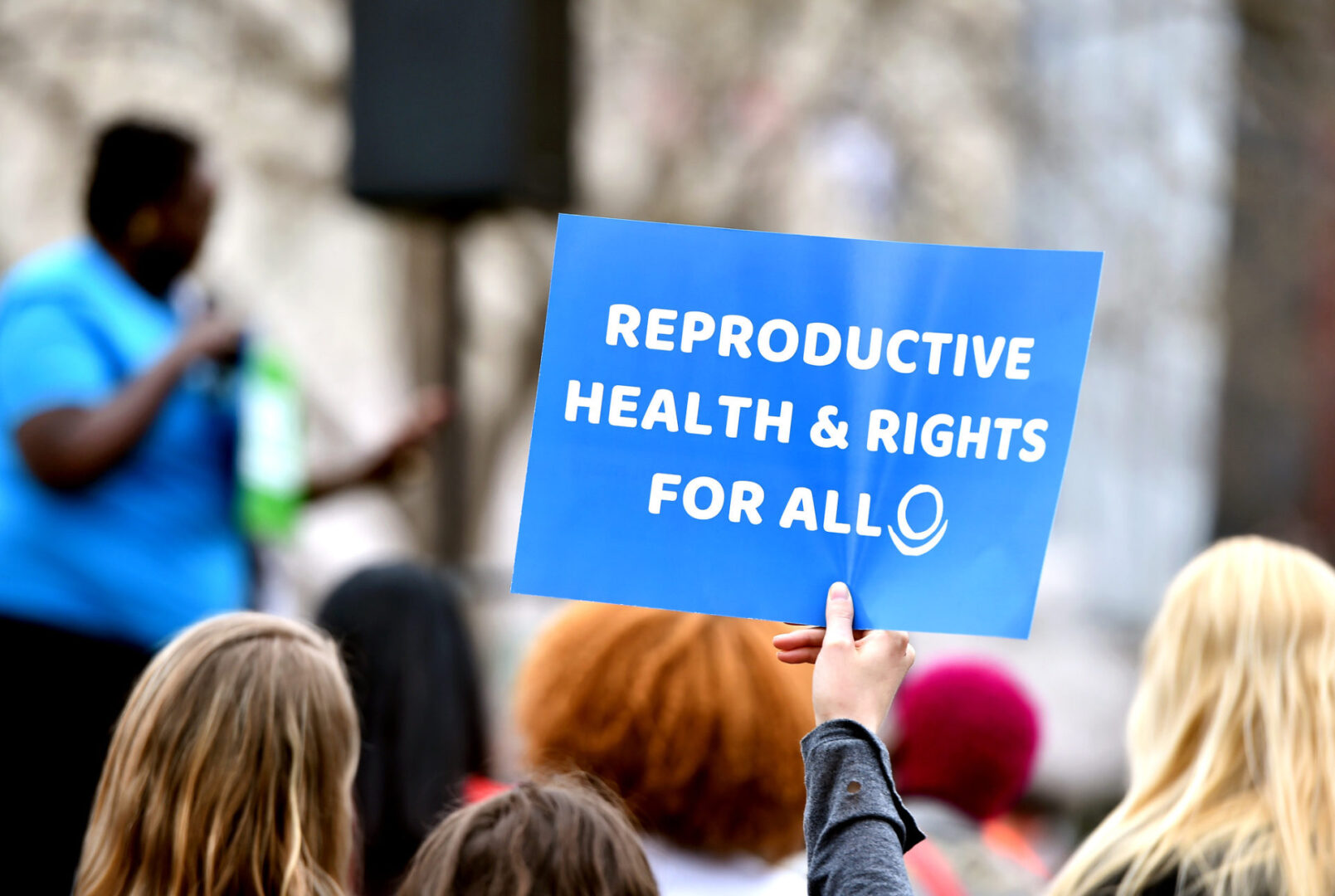One year since the devastating Dobbs ruling: Where are we now?
Written by Grace Long, Field Coordinator | Published: June 23, 2023
On June 24, 2022, the U.S. Supreme Court issued its decision in the case of Dobbs v. Jackson Women’s Health Organization, overturning the constitutional right to abortion.
The ruling came only seven months before the 50th anniversary of Roe v. Wade, the landmark case that legalized abortion nationwide. Before Roe, 30 states banned abortion without exceptions, and 16 allowed it only in cases of rape, incest, or in order to protect the pregnant person’s health. In its 1973 opinion, the Court declared that the Constitution implicitly guaranteed the right to privacy, which included the right to bodily autonomy. For millions of patients and advocates around the country, this decision was a huge victory.
Roe was not perfect. In an attempt to appease opponents, the Court allowed abortion bans after a certain number of weeks. Planned Parenthood v. Casey, a later case also dealing with the right to abortion, upheld the basic principle of Roe but made it easier for states to limit abortion. Anti-choice states continually pushed the boundaries of both rulings to put pressure on abortion seekers and providers. Most importantly, neither case established the needed infrastructure to increase abortion access. Abortions could be very expensive, especially for patients without insurance, and in many parts of the country, clinics were few and far between. Anti-choice lawmakers found other ways to deny care. A prominent example is the Hyde Amendment, which blocks federal funding from being used for abortion procedures. This forces many people who are enrolled in Medicaid, the majority of whom are low-income, to pay for abortions out-of-pocket. While some states do provide Medicaid funds that can be used for abortions, without exceptions such as rape or incest, most do not.
 But even with these caveats, the enormity of the Roe decision remained. The very fact that the Court had declared abortion to be a constitutional right spoke volumes about the importance of the procedure.
But even with these caveats, the enormity of the Roe decision remained. The very fact that the Court had declared abortion to be a constitutional right spoke volumes about the importance of the procedure.
One year ago, conservative justices overturned that right. In doing so, they gave individual states the power to decide whether abortions could continue within their borders. The same states that had been pushing the boundaries of Roe for decades jumped at the chance.
According to a recent report by National Partnership for Women & Families, 26 states have already banned or are soon likely to ban abortion. Fourteen states have near-total abortion bans, and six ban abortions from 6 to 20 weeks after the patient’s last menstrual period. More than 36 million women of reproductive age in the country, 15.4 million of whom are women of color, live in states that either ban or are attempting to ban abortion. Of those 36 million women, 2.9 million are disabled, and 12.5 million are economically insecure. Additionally, 1.3 million transgender adults and 1.2 million nonbinary adults were also deeply impacted by the Dobbs ruling, as many trans people require abortion services just as cisgender women do. Many of the trans-friendly abortion clinics that were forced to close also provided access to gender-affirming care, further jeopardizing the health of those communities.
What all of these numbers add up to is millions of people who were already facing severe social, economic, and political challenges, and who are now forced to jump even greater hurdles in order to access reproductive health care. This is especially egregious in light of our nation’s worsening maternal health crisis. BIPOC and disabled people are significantly more likely to die from pregnancy-related causes and are also disproportionately impacted by abortion bans.
Many of the same states that are banning or planning to ban abortion also have a long history of voter suppression, specifically regarding voters of color. These policies are the result of a centuries-long campaign to undermine the democratic rights of marginalized populations across the country.
While it is still legal for patients to travel across state lines to seek abortions (unless the patient is a minor residing in Idaho), the high travel costs in addition to the medical fees are untenable for many people. Anti-abortion activists have also launched a series of attacks on medication abortion, the use of which has expanded access in areas without in-person clinics. These include a recent lawsuit against the Federal Drug Administration (FDA). The plaintiffs are demanding that the FDA rescind its 2000 approval of mifepristone, which makes up one part of the most common abortion medication regimen in the U.S. These extremists are hoping to use the courts to overturn decades of best practice, same as they did with the Dobbs decision. If they’re successful, even patients in states where abortion is protected may lose access to mifepristone.
Many anti-choice politicians are promising to “only” go after providers and not patients—the majority of these bans are backed by criminal penalties that include jail time. A few states have also passed bounty hunter laws that give citizens the power to sue providers and, in some cases, anyone who “aids” or “abets” an abortion. While only one of these laws (Idaho’s) is still in force, the intent is clear: anti-abortion politicians are trying to create a culture of fear around abortion.
Perhaps the single greatest strength of many of the bans is their ambiguity, especially in regards to the medical realities of pregnancy and abortions. When both patients and providers are confused about what is and isn’t allowed, who can be prosecuted, and whether they’d serve time, even “permissive” bans can effectively end abortions within state lines. This also extends to the rape, incest, and health exemptions. Survivors of rape and incest often don’t want to hold their trauma up to public scrutiny, let alone make it the deciding factor in a personal medical decision. The vague wording of many of the medical exceptions has led doctors to decline to perform abortions, even when they have significant proof that the pregnancy is nonviable or even life-threatening for the pregnant person. The news is awash with stories of patients being denied miscarriage care, of pregnant people being turned away from emergency health centers, and of doctors compromising best practices to avoid legal trouble. The threat of courts not being supportive of the medical evidence is often greater than the instinct to protect patients.
 It’s easy to reduce the last 12 months to a maelstrom of bad legislation. But through the chaos, I’ve also seen incredible resiliency. Abortion funds, which provide financial aid to abortion seekers, received millions of dollars in donations. The Biden administration is enforcing federal laws to protect emergency access to reproductive health care. It’s also strengthening privacy protections for health information, to prevent states from using patients’ personal data against them. Voters have turned out in droves in support of pro-choice legislation, and over the last year, abortion has won every time it has been on the ballot. Even in states such as Kentucky, where legislators have historically been hostile toward abortion rights, record turnouts defeated efforts to add anti-abortion language to the state’s constitution.
It’s easy to reduce the last 12 months to a maelstrom of bad legislation. But through the chaos, I’ve also seen incredible resiliency. Abortion funds, which provide financial aid to abortion seekers, received millions of dollars in donations. The Biden administration is enforcing federal laws to protect emergency access to reproductive health care. It’s also strengthening privacy protections for health information, to prevent states from using patients’ personal data against them. Voters have turned out in droves in support of pro-choice legislation, and over the last year, abortion has won every time it has been on the ballot. Even in states such as Kentucky, where legislators have historically been hostile toward abortion rights, record turnouts defeated efforts to add anti-abortion language to the state’s constitution.
Polling has consistently shown that the majority of Americans support abortion access. This is sometimes a hard fact to come back to, as so much of my country is suffering under regressive legislation that does not reflect their values. But progress is already happening, everywhere I look. In many states, such as California, Kentucky, Michigan and Vermont, abortion activists have won landmark victories. Everywhere in the nation people are fighting for one another harder than they’ve done in decades, and they’re waking up to the idea that Roe was the floor, not the ceiling. Together, we will build a nation where abortion is equitable, accessible and available for all. Together, we’ll reach the ceiling.

